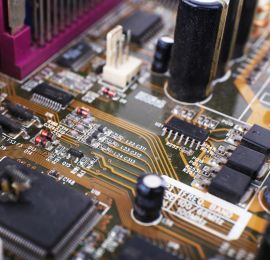electroniccomponentssurplus@gmail.com
Free shipping on all orders over £300
Electronic Testing
Electronic components are the building blocks of modern technology, from smartphones to smart homes, and beyond. However, electronic components can sometimes fail or malfunction, leading to issues with the devices they power. That's where electronic component testing comes in. In this guide, we'll take a closer look at electronic component testing and provide you with some tips to help you test your components effectively.
What is Electronic Component Testing?
Electronic component testing is the process of evaluating electronic components to determine whether they are functioning properly. The process involves measuring and analyzing the electrical characteristics of the component to identify any issues that may be present. Some of the most common electronic components that are tested include resistors, capacitors, diodes, transistors, and integrated circuits.
Why is Electronic Component Testing Important?
Electronic component testing is critical for ensuring that electronic devices function as intended. If an electronic component fails, it can cause a device to malfunction or stop working altogether. Testing electronic components can help identify potential issues before they cause problems, allowing for repairs or replacements to be made before the device fails.
Electronic Component Testing Methods
There are several methods that can be used to test electronic components. Some of the most common include:
-
Visual Inspection: This involves inspecting the component visually for any signs of damage, such as cracks, burns, or discoloration.
-
Multimeter Testing: Multimeters are used to measure the electrical characteristics of the component, such as voltage, current, and resistance.
-
Oscilloscope Testing: An oscilloscope can be used to measure and analyze the waveform of the electrical signal produced by the component.
-
Function Generator Testing: Function generators can be used to simulate different electrical signals to test how the component responds.
Tips for Electronic Component Testing
Here are a few tips to help you test electronic components effectively:
-
Understand the specifications: Before testing a component, make sure you understand its specifications, such as voltage and resistance ratings, so you know what to expect during testing.
-
Use appropriate tools: Make sure you have the appropriate tools for the type of testing you plan to perform, such as a multimeter or oscilloscope.
-
Follow safety guidelines: When testing electronic components, it's important to follow safety guidelines to avoid injury or damage to the component.
-
Test in a controlled environment: Testing electronic components in a controlled environment can help ensure accurate results and prevent outside interference.
-
Keep records: Keep detailed records of your testing results, including the date, time, and type of testing performed, as well as any issues or anomalies observed.
Conclusion
Electronic component testing is an essential part of ensuring the proper functioning of electronic devices. By understanding the methods and tips outlined in this guide, you can effectively test electronic components to identify any issues and make necessary repairs or replacements. Whether you're a DIY electronics enthusiast or a professional technician, proper testing is key to keeping electronic devices running smoothly.
- Choosing a selection results in a full page refresh.


